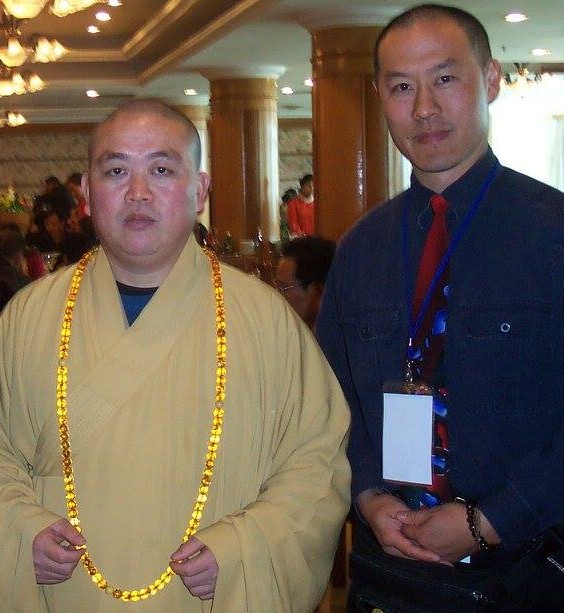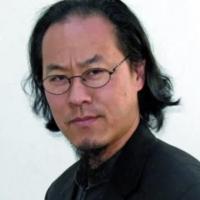For me, November 2023 wasn’t so much about Thanksgiving as it was about gratitude. It began with a visit from the Abbot of the Shaolin Temple of China, and that set the tone for the rest of the month. Venerable Shi Yongxin visited California as part of his ongoing mission to propagate the great legacy of Shaolin. And as a layman disciple of Shaolin, it was my duty to attend.
I’ve had a unique relationship with Shaolin Temple, one that has blessed me with many private audiences with the Abbot. It has also allowed me to train Shaolin Kung Fu under several highly talented monks and former monks. On a few occasions, I’ve even trained inside Shaolin Temple itself. However, my Kung Fu foundation is rooted from another form of Shaolin Kung Fu. Just like YMAA’s Shaolin Long Fist, it is different from what is espoused at the Temple today. For some, the distinction can be a challenge to reconcile, but not for me.
The Shaolin Diaspora
My Shaolin lineage comes down from Grandmaster Gu, Ru-Zhang (顧汝章) who was one of the ‘Five Southbound Tigers’ sent from the Central Guoshu Institute to spread their curriculum to Guangdong. Dr. Yang, Jwing-Ming’s Shaolin Long Fist lineage descends from Grandmaster Han, Qing-Tang (韓慶堂), a graduate of that same Central Guoshu Institute. Despite having very similar roots, our curriculums diverge. Nonetheless, we do share a few of the same forms, most notably the introductory forms of Lianbuquan (連步拳) and Tantui (彈腿). *
My first pilgrimage there was in 1995 for the 1500th Anniversary of the founding of Shaolin Temple. That was a truly historic event, and it changed my life. Being trained traditionally, I asked permission for the journey beforehand from my Northern Shaolin master, the late Lam, Kwong-Wing. He was skeptical of the authenticity of Shaolin Temple in post-Cultural Revolution China.
My Sifu was like most of the early Kung Fu master immigrants who came to the United States from Hong Kong or Taiwan. Many Chinese in those regions were refugees who had fled the Communist regime. Consequently, many had personal issues with the People’s Republic of China, which bled into their opinions of the martial arts of the mainland. This was exacerbated by the PRC's promotion of modern Wushu, the competitive sport form of Chinese martial arts that made a failed bid to become an Olympic sport. On top of that, there were many Shaolin monk demonstration tours that toured internationally in the late nineties. Being theatrical, these were composed with the acrobatics of modern Wushu, flamboyant movements that read well from stage. Modern Wushu became another affront to traditional martial artists that cast a negative light upon PRC martial arts.
Nevertheless, despite his reservations, my Sifu gave me his blessing. I think he was curious himself. And upon my return, he was pleased with what I had found. He allowed me to integrate what I had learned at Shaolin Temple into his school’s curriculum. Eventually he led school tours to Shaolin Temple himself and hosted several Shaolin monks as guest instructors at his school, but that’s another story.
Shaolin Temple in the 90s
Shaolin was a very different place when I first went in 1995. The Temple was in a period of reconstruction and there was no Abbot installed at that time. It was surrounded by tourist traps, including some outrageously preposterous ones like a roller coaster simulator and one of Mao’s vintage airplanes, an 'Air Force One' of the PRC. Shi Yongxin had already occupied the Abbot’s chambers within the temple, and I was very fortunate to meet with him there during my first pilgrimage. At that time, I didn’t anticipate becoming a disciple or a Shaolin researcher or anything like that. I just wanted to train. And I hoped to find the roots of my practice.
When I first went to Shaolin, I dreamed of finding some link or connection, some primordial version of the Shaolin forms that I learned from Lam Sifu. I hoped for some validation or affirmation in shared forms that justified the 'Shaolin' title of my discipline. According to legend, Grandmaster Gu’s lineage is traceable to a layman disciple of Shaolin, Gan, Feng-Chi. Gan was a folk hero who lived during the reign of the 4th Qing Emperor Yongzheng (1723-1735 CE) so if this legend is to be believed, our style left the Temple nearly three centuries ago. Today, many of the Kung Fu origin stories have been studied by scholars and shown to be apocryphal, so I’m not overly attached to the Gan Fengchi creation story. However, I am very attached to the authenticity of my practice. By 1995, I had already invested nearly two decades of my life into the art, so I wanted it to be real Shaolin.
I never did find any solid evidence. There was a Guandao form that has a parallel opening and the first line or two were somewhat similar. It was listed in one of the many Shaolin books that were just being published back then, but it felt like a reach to make any claim out of this. However, while the lack of any clear connection in any given form was disappointing, it was far from completely discouraging.
I’ve demonstrated my Northern Shaolin forms for many Shaolin Temple monks and masters, and they all agree that it is clearly Shaolin Kung Fu. Perhaps they were just giving me face but the correlation runs deeper than that. The Shaolin Temple forms that I have learned have a similar vibe to my Northern Shaolin. It feels very much the same, with a few variations, and that is to be expected. Prior to the last few decades of video, the transmission of forms has been a huge game of Chinese whispers. My lineage split from the temple over two centuries ago. That’s a lot of time for the teachings to evolve.
Since my early Shaolin Temple trips, many others from my Northern Shaolin lineage have gone to Shaolin and come to the same conclusions about the similarities. Northern Shaolin and Shaolin Temple Kung Fu are complimentary and harmonious. I practice both in tandem now. I would be very curious to hear of any YMAA Shaolin Long Fist practitioners that have studied some Shaolin Temple Kung Fu and hear their comparisons of the two lineages.
The Abbot’s Mission in America
Back to the Abbot, in the first weekend of November, he stopped in the San Francisco Bay Area, where I reside. Then he spent the week in Arizona, where led a Land Blessing Ceremony at the site where the Red Mountain Shaolin Temple is to be erected. This is an ambitious project, a full-scale subsidiary Shaolin Temple, the first of its kind in North America. The following weekend, he returned to California, but to the south where he oversaw the inaugural North American Shaolin Kung Fu Games. The Shaolin Kung Fu Games aspires to stage competitions in six continents. Each of these Games serve as qualifiers for a World Shaolin Kung Fu Games to be held in 2024. There was also the Second North American Shaolin Duanpin (the first was at the Tiger Claw Elite KungFuMagazine.com Championships where I serve as a coordinator and MC). This was a ranking examination for a global system of standardization of Shaolin Temple Kung Fu. From America, the Abbot went to Venice, Italy, to oversee the inaugural European Shaolin Kung Fu Games. These games are the latest advancement for Shaolin Temple in hopes of increasing its ever-expanding reach in the modern world.
An American Shaolin Temple? Shaolin World Kung Fu Games? Shaolin Duanpin? That’s a lot of new changes for Shaolin. And I’m sure there will be challenges, as well as criticisms. Being in the thick of it, I’m privy to a lot of those obstacles, more so than most. Over the last 1500+ years, the Shaolin Temple has seen triumph and ruin. It has gone from being the host of emperors to being burned down and nearly abandoned. But when all is said and done, I’m extremely grateful to be alive in these times when the Shaolin Temple is flourishing. It is a rare privilege to see the temple restored and the teachings spread across the world. And I’ll continue to contribute to Shaolin where I can, whether it be supporting the Abbot’s missions, or just practicing my own Shaolin Kung Fu, and passing it on.
* Tantui is a very common Northern Kung Fu form, in part because it was propounded as a fundamental curriculum of the Jingwu Association. I have seen a version of Tantui at Shaolin Temple, but only on an obscure video. It was notable because it was a 32-line version, whereas most Tantui forms run 10 or 12 lines.
The above is an original article by Gene Ching, Staff Writer for YMAA Publication Center.






